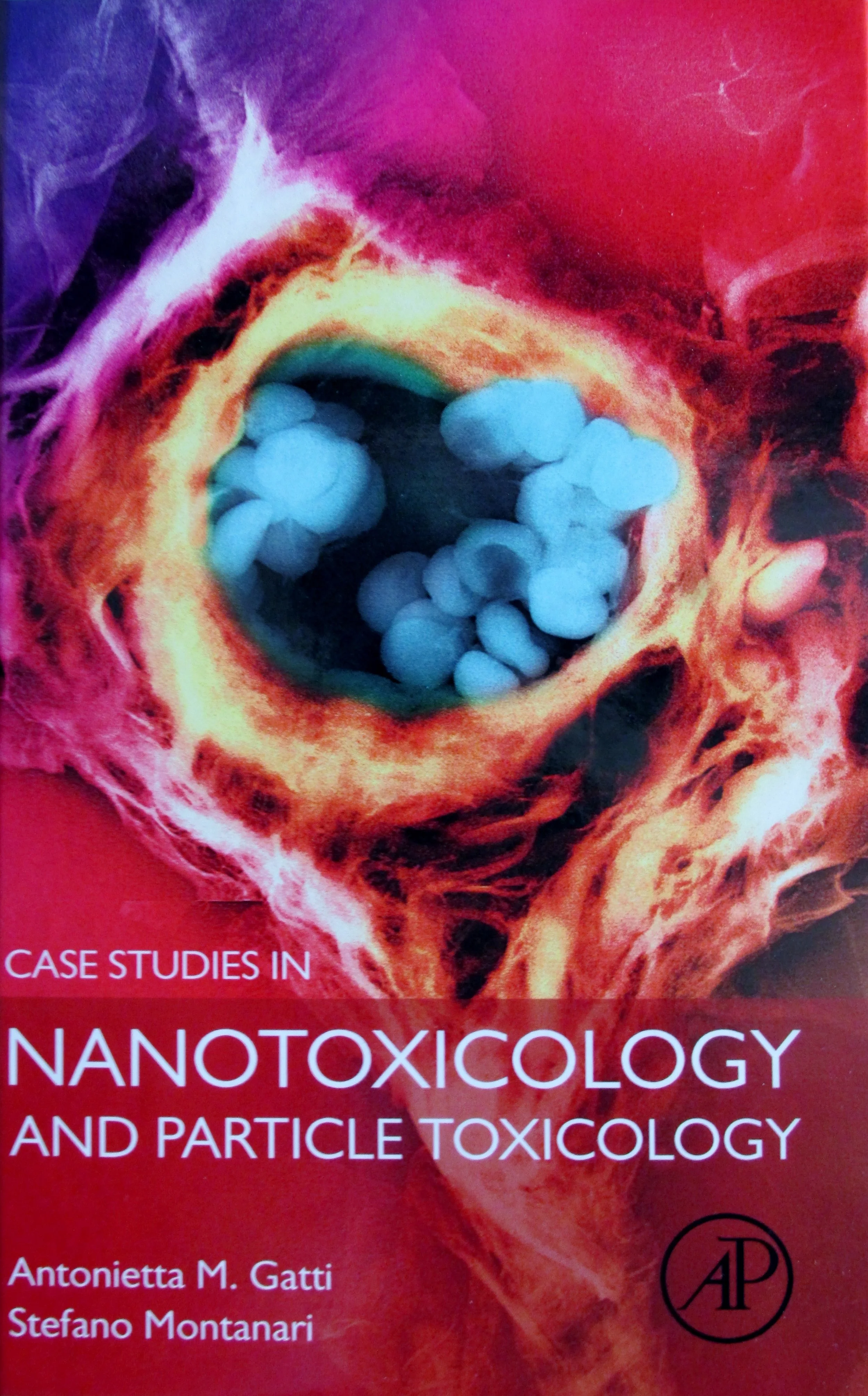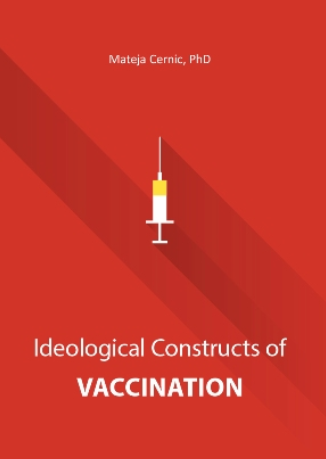Nanocontamination of vaccine as the cause of bone cancer in an eight-year-old child?
Photo: red blood cells, cover photo of the scientific publication Case studies in: Nanotoxicology and Particle Toxicology (2015), by courtesy of Dr. Gatti.
The causes of many “contemporary” diseases could be sought in the exposure to micro- and nanoparticles that are an accompanying factor of industrialisation and also militarisation. Dr Antonietta M. Gatti and Dr Stefano Montanari have potentially linked diseases, such as different types of cancer, thyroid diseases, congenital diseases, the Gulf War syndrome etc., to the environment, in certain cases also to the micro- and nanocontamination of vaccines.
They used two types of electron microscopes (ESEM or FEG-ESEM) to analyse environmental pollution, vaccines, and different tissue samples of individuals that were affected with certain diseases. Micro- and nanoparticles, apart from those that have always been present in nature, are usually inorganic and biologically nondegradable (mostly metal) foreign objects that probably cause a permanent inflammatory reaction upon entering the body.
An eight-year-old girl gets bone cancer – a consequence of vaccination?
In the bone biopsy of an eight-year-old girl who was suddenly affected by aggressive bone cancer – osteosarcoma, a pattern of micro- and nanoparticles was discovered which was chemically so unusual that, despite a detailed anamnesis of the places she visited, could not be linked to any environment. If there was a major factor of industrial pollution, such as incineration plants, anywhere in the vicinity, the answer might perhaps be found there. However, even the vicinity of the military (3 km) and the international (7 km) airport could not explain the unusual composition of the foreign matter that was doubtlessly of external origin.
The bone biopsy, figure 5.10 from the book Case studies in Nanotoxicology and Particle Toxicology, © Dr. Gatti.
Micro- and nanoparticles of aluminium, lead, bismuth, copper; and lead, chromium, calcium, titanium, silicon, aluminium; and titanium, were grouped together with other elements such as aluminium, silicon, iron, etc.
The results of the analysis were linked to vaccines. In fact, the vaccination was performed eight months prior to the diagnosis, however, due to the bureaucratic negligence of the doctor responsible at the time, no concrete data on the vaccine could be obtained.
Even though the link has not been proven due to the circumstances, Gatti and Montanari believe that the hypothetical link between the vaccine and the development of the disease is worth considering.
General information on nanotoxicology: vaccines, food and air
Micro- and nanoparticles enter the body through the inhalation of polluted air, ingestion of food from plant and animal sources originating from contaminated areas, and likely also through the injection of contaminated vaccines. In an interview, Montanari points out that injection causes the most difficulties for the immune response of the body that is to a certain extent naturally capable of excreting foreign micro- and nanoparticles.
Upon entering the body, these particles can potentially damage cells, tissues or organs. In addition to the nanotoxicological hypothesis of a link between the particles and the development of various diseases, it is also worth considering whether nanoparticles, which due to their small size can even enter into cells, could potentially be able to alter a person’s DNA.
Nanotoxicology – interdisciplinary scientific observation and analysis
An environmental analysis shows whether the present micro- and nanoparticles are of industrial origin. At the same time, an analysis of the pathological sample of the diseased, the deceased or those living nearby can be performed. In many cases, an exact* match can be made between an individual disease and environmental micro- and nanocontamination. Conversely, if no pollution factor can be determined in the workplace or in the relative vicinity of the diseased person’s home, we could posit that the disease might be a consequence of vaccination.
Foreign bodies inside the blood circulation. Photo by courtesy of Dr. Gatti.
Diseases can develop without the presence of nanoparticles, but the absence of the latter does not prove the absence of (primary) nanopathology. The cause may be incorrect handling, or a wrong sample. For example, it is typical for cancerous diseases for the nanoparticles to first damage cells that then mutate and propagate further, and thus the pathological sample later does not contain any nanoparticles.
Morbidity as a consequence of environmental pollution
Due to the extent of concrete investigated cases we can only summarise certain information at this point. Gatti and Montanari have often been asked, among other by Italian courts, to analyse a polluted area of the environment and to confirm or disprove the correlation of pollution with usually cancerous diseases in individuals.
In the city of Terni in the centre of Italy, they have analysed a local incineration plant that was consequently forced to stop its operation. In dust samples, they most often identified iron, silicon and lead, in various combinations with titanium, barium, chromium, cadmium, zirconium, aluminium, zinc, strontium, chlorine, antimony, etc. They even found thorium, a radioactive element. They also found particles that were composed of barium and sulphur, or from silver and chlorine. They found identical samples on the surface of the leaves of vegetables growing nearby. They analysed the samples of pathological tissue of fifteen diseased individuals and confirmed a correlation.
They made similar discoveries in the case of the thermoelectric power plant between the Italian regions Veneto and Emilia Romagna that has been closed for over 30 years. The plant was built by the Italian company ENEL and burned heavy oils (such as petroleum) at full power. During the time of operation, the inhabitants of the surrounding area complained of oily droplets that were falling on them and the surroundings and that were ruining their crops and the paint on their cars. Petroleum oil, for example, in addition to carbon and hydrogen, contains also lead, sulphur, barium, strontium, antimony and iron, in different combinations. Despite the thermoelectric power plant being inactive for over 30 years, they were still able to confirm the presence of micro- and nanoparticles and their correlation with the morbidity of a certain group of inhabitants.
They also performed a study of the consequences of environmental pollution in embryos and/or new-borns that had severe congenital diseases or deformities. Since it was possible to identify micro- and nanoelements of external origin in their bodies, Gatti and Montanari concluded that the only possible entry path for the particles was through the placenta from the mother. This discovery raises questions about the assumed genetic origin of congenital diseases.
The scientific publication also presents cases that indicate a link between the morbidity of soldiers with being involved in war or the military industry. Some concrete cases point to the correlation between morbidity and environmental pollution in certain workplaces. Cases of analyses performed on food show that if the food is produced in a micro- and nanocontaminated area, it is likely to be contaminated, too.
Should the governments of different countries adopt protective legislation regarding pollution and nanocontamination?
The European Commission has granted two projects for nanocontamination research in Gatti’s past (Nanopathology and DIPNA). At present, however, both authors of the book have been subjected to Italy’s systemic repression and recently had all their documentation seized and access to their laboratory denied.
In terms of environmental pollution, states in general do not have sufficiently efficient protective legislation. The quantitative limits of permitted pollution often depend on politics, not science, thus the situation is most critical in so-called third-world countries where the principles of democracy often get lost in the context of corporative capitalism.
In the area of nanotechnology, studies are usually performed too superficially, compared to the study summarised here, which is likely due to the lobbying of the nanoindustry. States that are linked to environmental pollution, such as male sterility, spontaneous abortions, congenital diseases and neuro-endocrine diseases, are also not usually questioned.
The authors of the breakthrough scientific work are well aware of this social denial; therefore they write in their dedication that this is not a prophecy at the turn of the century, but an interdisciplinary scientific observation of the processes occurring all over the world.
Micro- and nanotoxicology is the key question to consider regarding the future. Gatti and Monatanari see a solution in personalised medicine that would account for nanotoxicology in diagnostics and would in time develop the suitable technology.
When will industrial and military pollution and the contamination of vaccines with micro- and nanoparticles be recognised as a public health issue?
*A certain correlation between a specific nanopathology and environmental nanocontamination. The results of environmental measurements namely differ also in relation to the time of measuring. Also, individual cases of morbidity from the same area show that individual cases present with the presence of different micro- and nanoparticles in the body, and thus different developments of disease are possible. The individual factor is also key.
This article was originally published in Slovenian language.





